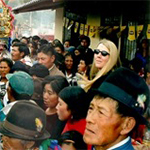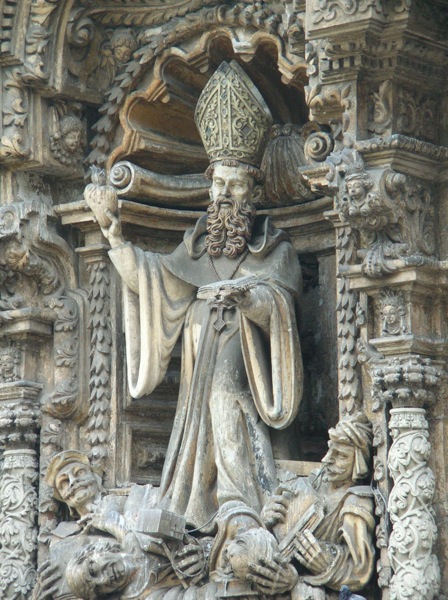Interview – Susan V. Webster
The Jane Williams Mahoney Professor of Art History
 We are happy to welcome Susan Webster, the Mahoney Professor of Art History, to our department. She also holds a joint appointment with the Program of American Studies. We are very lucky to have her. Susan was Professor of Art History at the University of St. Thomas (St. Paul, MN), and received her Ph.D. from the University of Texas-Austin, an MA from Williams College, and her BA from Reed College.
We are happy to welcome Susan Webster, the Mahoney Professor of Art History, to our department. She also holds a joint appointment with the Program of American Studies. We are very lucky to have her. Susan was Professor of Art History at the University of St. Thomas (St. Paul, MN), and received her Ph.D. from the University of Texas-Austin, an MA from Williams College, and her BA from Reed College.
Susan is a leading scholar in the art of post-colonial Latin America, focusing primarily the indigenous artists, builders, and artisans who created Quito, Ecuador. Her book: Arquitectura y empresa en el Quito colonial : José Jaime Ortiz, alarife mayor (2002), documents the major architectural projects completed by an indigenous builder of the seventeenth century. A Fulbright fellowship in Quito (2005-2007) provided Susan with an abundance of additional material on native Ecuadoran workmen. A sequel—and a fuller account— will appear in 2010. Besides bringing to light the roles played by native Latin American artists and architects, Susan is regarded internationally as an expert in confraternities—pious groups of laypersons—and their art patronage in Spain and Latin America. Her book: Art and ritual in Golden-Age Spain : Sevillian confraternities and the processional sculpture of Holy Week (1998), is interesting reading. These are topics that one could continue to pursue for a lifetime. Susan, however, sees her research going beyond the mountain-top capital to extend to Bogotá (Colombia), Potosí (Bolivia), and Santiago (Chile).
Very much a part of Susan’s life and work is her husband, Hernán Navarrete. A native of Chile, Hernán is a photographer who specializes in portraits and capturing people in the act of living. He has the talent to elevate the everyday activities of women, children, and men beyond the mundane to permit us to see the beauty in human endeavors. Andrews Gallery will host an exhibition of Hernán’s photographs in June: Women’s Work in the Americas.
Over lunch at Lenny’s on Prince George Street, a member of the AAH Newsletter staff interviewed Susan to get her impressions of William and Mary—and AAH in particular—after her first academic year:
AAH News: What attracted you to W&M?
Susan: First and foremost, W&M is an historic liberal arts institution. I was trained at both small liberal arts schools and a large research university. W&M combines the best of both of those. These aren’t just words; I really believe this. There is a strong commitment to liberal arts and cross-disciplinary study and teaching here.
AAH News: W&M is very student-focused. What can you say about our students?
Susan: They are absolutely fabulous. I have been so impressed by the quality of their research and writing abilities. Many will have a significant impact on their chosen fields or professions. One of their most impressive qualities is their desire—and success—to combine the study of humanities with the study of hard science.
Susan: First and foremost, W&M is an historic liberal arts institution. I was trained at both small liberal arts schools and a large research university. W&M combines the best of both of those. These aren’t just words; I really believe this. There is a strong commitment to liberal arts and cross-disciplinary study and teaching here.
AAH News: W&M is very student-focused. What can you say about our students?
Susan: They are absolutely fabulous. I have been so impressed by the quality of their research and writing abilities. Many will have a significant impact on their chosen fields or professions. One of their most impressive qualities is their desire—and success—to combine the study of humanities with the study of hard science.
AAH News: Now that you have completed an academic year at W&M, what are your impressions and comments—you can be truthful—regarding the Department of Art & Art History?
Susan: How wonderful and revitalizing it is to be in a combined Art & Art History department. [Note: St. Thomas was originally half of a Catholic institution. Art history was considered appropriate for men, while women studied studio art at St. Catherine’s.] To walk through Andrews Foyer to see student art work that is always changing is important for faculty and all students. It is important for the study of art history for all students to have experience making art. Making art is the balance for the textual, critical approach of the art historian. Art students have a profound understanding of the physicality of art that is lost in reproductions. Art history students need to rub against this and have it rub off on them.















